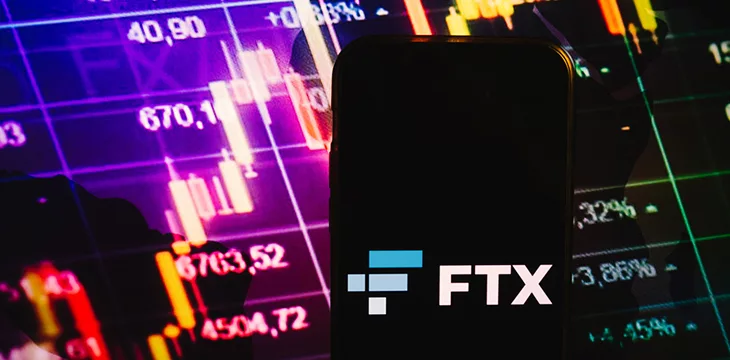|
Getting your Trinity Audio player ready...
|
The FTX and Celsius Network bankruptcies are slowly getting around to returning assets to customers, while the great mystery of who hacked FTX may have been solved.
On January 31, U.S. Bankruptcy Judge John Dorsey approved a controversial plan by FTX Debtors—the entity appointed to untangle the FTX exchange’s tangled financial web following its November 2022 bankruptcy filing—to repay customers based on the values that their tokens held at the time the exchange collapsed.
That collapse occurred in the depths of ‘crypto winter,’ a time of extremely depressed token values following a raft of bankruptcies that preceded FTX’s. Token prices have since rebounded—nearly tripling in some cases—but Judge Dorsey said he had no “wiggle room” on this front, given the “very clear” bankruptcy laws that require debts to be repaid at the value they held when things went dark.
FTX’s collapse—and that of its affiliated market-maker Alameda Research—exposed glaring holes in its haphazardly overseen finances. FTX Debtors says it’s recovered around $7 billion worth of assets that will hopefully allow it to repay customers’ in full,’ albeit not what customers would have enjoyed had they held their assets somewhere other than on Sam Bankman-Fried’s doomed platform.
That ‘in full’ statement is anything but guaranteed, but FTX Debtors attorney Andy Dietderich said he believes “the objective is within reach.” Much will depend on the willingness of government agencies who put in their own claims for unpaid taxes, penalties, and such to forego collection until rank-and-file customers receive their due.
The FTX estate recently boosted its cash cache by nearly $2 billion following the sale of certain assets. This included dumping nearly $1 billion worth of shares in GBTC, the BTC-based exchange traded fund run by Digital Currency Group’s (DCG) Grayscale Investments subsidiary. That sale followed last month’s still unexplained decision by Alameda to drop its lawsuit against Grayscale for (among other things) imposing excess management fees on GBTC holders.
The FTX estate was recently cleared to unload around $222 million worth of Bahamian real estate, including the flashy Orchid Penthouse that was home to SBF and several other
FTX/Alameda execs. There are also dozens of other properties, such as the $16 million apartment that SBF bought his parents (with FTX customer cash) after his father bitched about his relatively meager salary.
One property that’s now officially off the market is a revived FTX exchange. FTX Debtors had floated the idea that FTX’s technology could be sold to new operators who might reanimate the platform, whether under the tainted FTX brand or a brand new banner.
On Wednesday, Dietderich told Judge Dorsey that this plan was now dead due to failed negotiations with potential buyers. In the end, Dietderich said the “costs and risks of creating a viable exchange from what Mr. Bankman-Fried left in a dumpster were simply too high.”
FTX hack suspects charged
Meanwhile, last week saw three individuals indicted for their apparent role in the
hack/theft of around $400 million in tokens from FTX in the hours following its November 2022 bankruptcy filing. According to an indictment filed in the U.S. District Court for the District of Columbia on January 24, Robert Powell, Carter Rohn, and Emily Hernandez ran a SIM swap ring that targeted 50+ victims over a two-year period that ended in April 2023.
While the indictment doesn’t mention FTX by name, it does note one incident that began on November 11, 2022—the date of FTX’s bankruptcy filing—in which the ring compromised a mobile phone account belonging to an individual who worked for an unidentified company. Over the next day or so, the scammers “transferred over $400 million in virtual currency from Victim Company-1’s virtual currency wallets to virtual currency wallets controlled by the co-conspirators.”
That amount roughly corresponds with the sum that went missing from FTX in the immediate chaos surrounding the exchange’s abrupt closure. In December 2022, the Department of Justice (DOJ) opened a probe into the matter based on the widespread suspicion that SBF or some other senior FTX/Alameda exec was looting the store while fleeing the scene.
Last October, blockchain analysts Elliptic traced some of FTX’s stolen tokens to coin mixing services and the possible involvement of “a broker or other intermediary with a nexus in Russia.” On Thursday, Elliptic noted that some of the stolen assets had begun to move last week after months of lying dormant.
Company-1/FTX was the only non-individual cited in the indictment, and the other victims’ losses ranged from $15,000 to $1,000,000. It’s unclear how much of the gang’s stolen tokens may have been in their possession when the indictments were filed, nor whether the three individuals have been arrested.
The first thing we do, let’s kill all the lawyers
Getting back to Wednesday’s hearing, Dietderich warned that FTX customers may have a while longer to wait before they see any payment. The delay is reportedly necessary so a final determination can be made as to the legitimacy of each customer/creditor claim.
There’s also the small matter of last month’s ruling by the U.S. Third Circuit Court of Appeals that FTX’s bankruptcy needs to be investigated by an independent examiner. Early in the process, Judge Dorsey rejected the U.S. Trustee’s request for an independent examiner, arguing that it would prove too costly. Instead, Dorsey left the examining to John J. Ray III, FTX’s post-bankruptcy CEO.
But the Third Circuit’s three-judge panel overruled Dorsey, noting that the appointment of an independent examiner is required under the U.S. Bankruptcy Code if the debt tops $5 million. The panel also agreed with the U.S. Trustee’s concerns that “officers or employees who may have engaged in wrongdoing could remain at FTX Group.”
When Judge Dorsey made his original decision, concerns were voiced regarding the involvement of the Sullivan & Cromwell (S&C) law firm, which served as FTX advisors for over a year before the roof fell in. Dorsey dismissed concerns regarding S&C’s involvement as “hearsay, innuendo, speculation, rumors” and claimed to see “no evidence of any actual conflict here.”
But the Third Circuit noted that a bankruptcy examiner is supposed to be “first and foremost disinterested and non-adversarial.” This aspect was “particularly salient here, where issues of potential conflicts of interest arising from debtor’s counsel serving as pre-petition advisors to FTX have been raised repeatedly.”
Following the Third Circuit’s rebuke, Judge Dorsey convened a status conference to discuss plans to appoint an examiner. S&C attorneys argued that the court should first determine the “appropriate” scope of the examiner’s duties before he/she is appointed. S&C argued for a narrow scope so as not to derail the “freight train” that is their plan to return cash to FTX customers.
Dorsey said his “preliminary thoughts” were that the examiner should examine all investigations conducted during the bankruptcy process, including material related to S&C’s retention as FTX’s bankruptcy counsel. The parties have agreed to confer to work out the scope and timing of the examination, which they hope will take no longer than 45 days. A report will then be filed by the examiner, and the bickering will begin anew.
There’s no doubt that S&C has benefited immensely from its ongoing role in FTX’s autopsy. The firm just submitted its latest bill to the bankruptcy court for services rendered in the month of December, seeking $10.1 million. This would bring S&C’s total billing requests for 2023 to nearly $129 million. Good work if you can get it.
Don’t be like Larry
Among FTX’s more recognizable (self-described) creditors is one Larry David, the Curb Your Enthusiasm star who memorably appeared in the FTX commercial that ran during the 2022 Super Bowl. The Associated Press caught up with David while he was promoting
Curb’s new season and asked him about that infamous promo.
According to David, he’d consulted with “friends of mine, well-versed in this stuff,” asking whether there was “anything wrong with this, me doing this? Is this okay?” David says the response he got was that FTX was “totally on the up and up … so like an idiot, I did it.”
David said he would “love to be part of” a class action lawsuit against FTX because part of his payment for the commercial “was in crypto. So I lost a lot of money.” For the record, between Curb and Seinfeld (which he co-created), David’s net worth is in the hundreds of millions of dollars. So don’t cry for him, Argentina.
Celsius money on the move
Moving on from FTX, January 31 saw Celsius Network LLC announce its successful emergence from bankruptcy some 18 months after the struggling digital asset lender filed for Chapter 11 protection.
Under the approved restructuring plan, Celsius has begun distributing “over $3 billion of cryptocurrency and fiat” to customers and creditors. The distributions will be made via PayPal (NASDAQ: PYPL) and the Coinbase (NASDAQ: COIN) exchange, despite U.S. securities regulators objecting to the latter’s participation.
PayPal will handle token distributions to U.S. residents, while Coinbase will do the same for international residents (assuming Coinbase accepts customers in their jurisdiction). The Stretto bankruptcy solutions firm will handle cash distributions. Customers must have completed and passed AML/KYC compliance checks for their Celsius accounts in order to receive distributions.
The use of PayPal and Coinbase for distribution will allow Celsius to shut down its mobile and web applications as of February 28, after which customers will lose access to the data contained therein.
Creditors will also receive shares in Ionic Digital, the new BTC mining operation that will be managed by Hut 8 Corp, and expect/hope to trade publicly following the necessary approvals. Ionic will be led by Hut 8’s former chief commercial officer, Matt Prusak, who officially exited Hut 8 on January 31. Prusak previously served as chief commercial officer of U.S. Bitcoin Corp (USBTC), the Texas-based mining outfit that merged with Hut 8 last year.
Unlike the FTX plan, Celsius says distributions of tokens will be conducted based on the value of BTC and ETH as of January 16. Sample charts indicate that creditors with claims over $100,000 will receive 57.9% of the sum owed in the form of tokens, plus another 14.9% in the form of Ionic shares, for a total initial distribution recovery of 72.8%. A further 6.4% top-up may occur via an “illiquid asset recovery” process.
Unlike FTX, which was a quasi-viable business laid low by some truly inept/corrupt decisions, bankruptcy filings confirmed that Celsius was a Ponzi scheme from its inception. Last July, CEO Alex Mashinsky was hit with criminal fraud charges, and his trial is scheduled to get underway in September.
Follow CoinGeek’s Crypto Crime Cartel series, which delves into the stream of groups—from BitMEX to Binance, Bitcoin.com, Blockstream, ShapeShift, Coinbase, Ripple, Ethereum,
FTX and Tether—who have co-opted the digital asset revolution and turned the industry into a minefield for naïve (and even experienced) players in the market.

 12-10-2025
12-10-2025 





